
HOME
INTRO
SYMBOLS
ALMANAC
ECONOMY
GEOGRAPHY
STATE MAPS
PEOPLE
FORUM
NEWS
COOL SCHOOLS
STATE QUIZ
STATE LINKS
BOOK STORE
MARKETPLACE
NETSTATE.STORE
NETSTATE.MALL
GUESTBOOK
CONTACT US
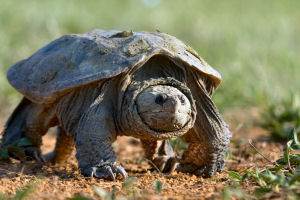
State Reptile: Common Snapping Turtle (Chelydra serpentina)
Credit: © 2006 Charles H. Warren, Courtesy of life.nbii.gov
New York Law
The following information was excerpted from the Consolidated Laws of New York, STL - State, Article 6, Section 87.
STL - State
ARTICLE 6 - ARMS AND GREAT SEAL OF STATE
SECTION 87
§ 87. State reptile. The common snapping turtle (chelydra serpentina) shall be the official reptile of the state of New York.
* NB There are 2 § 87's
Sources...
The Consolidated Laws of New York. STL: Article 6-Section 87 Accessed January 19, 2011.
Shearer, Benjamin F. and Barbara S. State Names, Seals, Flags and Symbols: A Historical Guide Third Edition, Revised and Expanded. Westport, Conn: Greenwood Press, 3 Sub edition, 2001.
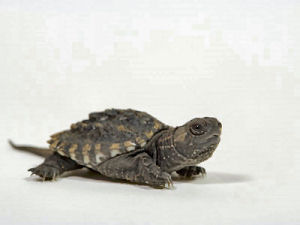
Baby Snapping Turtle
Photos, posters, and prints
Additional Information
Snapping Turtle: New York State Department of Environmental Conservation: Information on the appearance, habits and habitat preferences of the snapping turtle. Where to go to view snapping turtles in the wild.
Chelydra serpentina (snapping turtle): The University of Michigan Museum of Zoology, Animal Diversity Web.
Chelydra serpentina Photographs: CalPhotos, a project of the Biodiversity Sciences Technology group (BSCIT), part of the Berkeley Natural History Museums at University of California, Berkeley.
Snapping turtle (Chelydra serpentina): The Nonindigenous Aquatic Species (NAS) information resource for the United States Geological Survey.
Chelydra serpentina - (Linnaeus, 1758): Integrated Taxonomic Information System (ITIS), National Museum of Natural History, Washington, D.C..
Chelydra serpentina - (Linnaeus, 1758): NatureServe Explorer.
Turtles of New York: State University of New York College of Environmental Science and Forestry.
State Reptiles: Complete list of official state reptiles.
More symbols & emblems: Complete list of official New York state symbols.
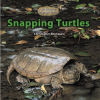
Snapping Turtles
Christopher Blomquist
Snapping Turtles, by Christopher Blomquist. 24 pages. Publisher: PowerKids Press; 1st edition (August 2004) Reading level: Grade 3. With powerful jaws that can cut through flesh like butter, these grumpy turtles have a temperament to match their snappish bite. They're content to prowl freshwater in search of food, but pull them onto land and they get really mad. Most snappers hibernate in winter, but some are so tough that they crawl around under the ice of lakes and streams. The common snapping turtle and the scary looking alligator snapper are both featured in this fun and factual book.
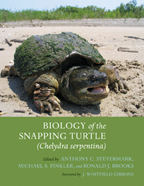
Biology of the Snapping Turtle
(Chelydra serpentina)
Biology of the Snapping Turtle (Chelydra serpentina) , edited by Anthony C. Steyermark, Michael S. Finkler, and Ronald J. Brooks with foreword by J. Whitfield Gibbons. 240 pages. Publisher: The Johns Hopkins University Press; 1 edition (March 14, 2008) The name "snapping turtle" conjures up images of powerful, prehistoric-looking beasts that lurk in the dark waters of local swimming holes. Beyond its status as childhood legend, Chelydra serpentina is one of the most interesting reptiles of the New World. One of our largest turtles, this animal weighs up to thirty-five pounds, lays as many as one hundred eggs and can deliver a nasty bite. Due to its wide distribution, abundance, and large reproductive output, the snapping turtle has become one of the most extensively studied species of reptiles.
This volume synthesizes all that is known about the common snapping turtle to provide an up-to-date and comprehensive resource on the species' evolution, physiology, behavior, and life history. Anthony C. Steyermark, Michael S. Finkler, Ronald J. Brooks, and a team of experts detail the systematics, energetics, growth patterns, sex determination, and population genetics of snapping turtles and devote special attention to the fossil record of the snapping turtle family Chelydridae.
The first broad biological treatment of the common snapping turtle, this is the definitive reference for anyone working with or interested in this fascinating reptile.
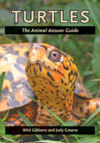
Turtles
Turtles: The Animal Answer Guide, by Whit Gibbons and Judy Greene. 184 pages. Publisher: The Johns Hopkins University Press; First Trade edition (November 12, 2009) Ever wonder how many kinds of turtles there are? Or if they have teeth? Why so many turtles have yellow stripes on their neck? If it is wise to feed turtles in your neighborhood pond or lake? Whit Gibbons and Judy Greene, two internationally known turtle biologists, provide complete answers to the most frequently asked questions about the more than 300 turtle, tortoise, and terrapin species of the world.

Turtles of the
United States and Canada
Turtles of the United States and Canada, by Carl H. Ernst and Jeffrey E. Lovich. 840 pages. Publisher: The Johns Hopkins University Press; second edition edition (May 12, 2009) Ernst and Lovich's thoroughly revised edition of this classic reference provides the most updated information ever assembled on the natural histories of North American turtles.
Each species account contains information on identification, genetics, fossil record, distribution, geographic variation, habitat, behavior, reproduction, biology, growth and longevity, food habits, populations, predators, and conservation status. The book includes range maps for freshwater and terrestrial species, a glossary of scientific names, an extensive bibliography for further research, and an index to scientific and common names.

Baby snapping turtle hatching rubber stamp, This is a deeply etched, finely detailed rubber stamp mounted on high quality white maple wood block with hourglass sides. Approximate Image Size: 1 3/8" x 1 5/8".

Baby snapping turtle rubber stamp, Another deeply etched, finely detailed rubber stamp mounted on high quality white maple wood block with hourglass sides. This one is approximately 1" x 2 1/2".



